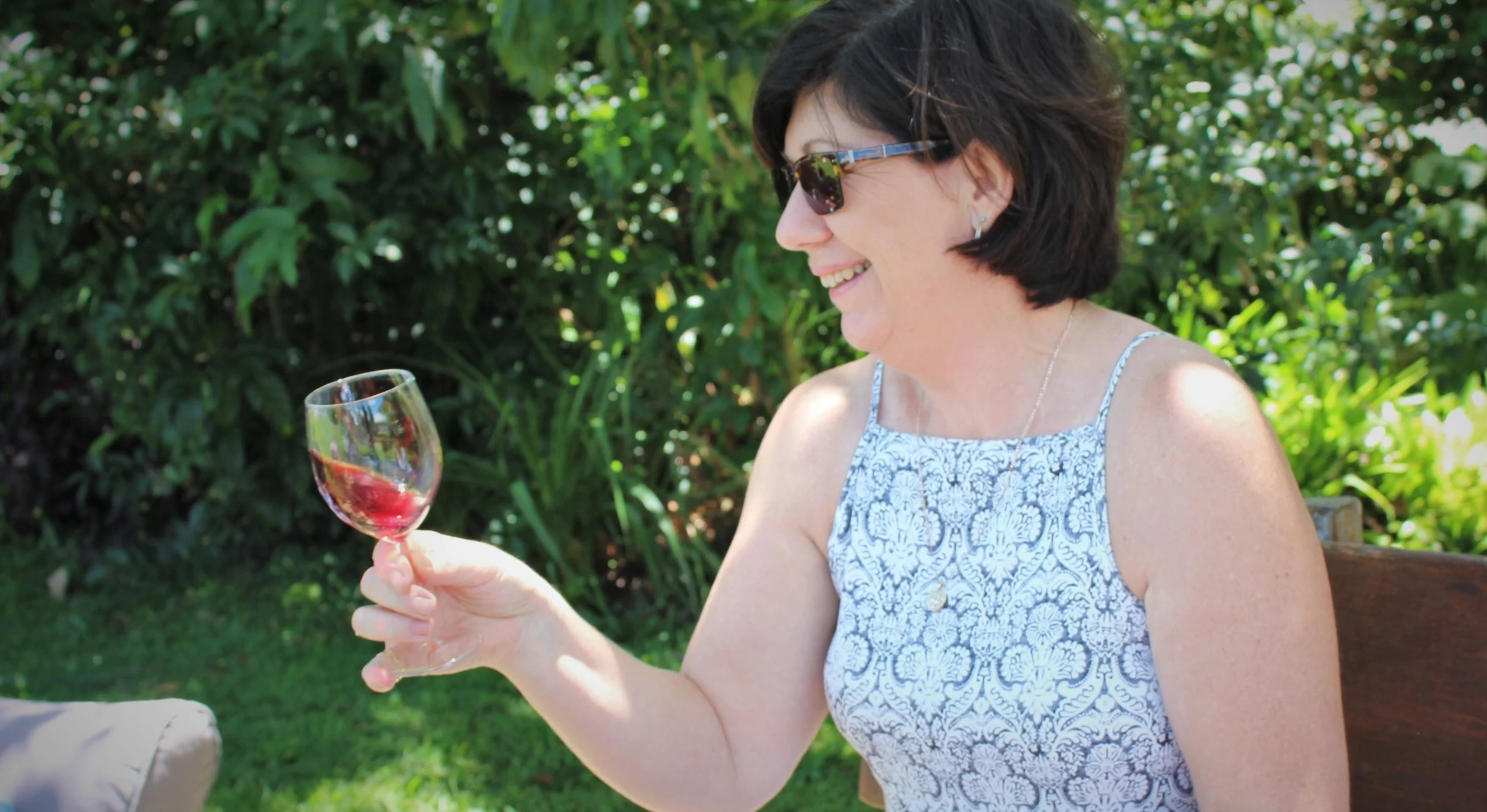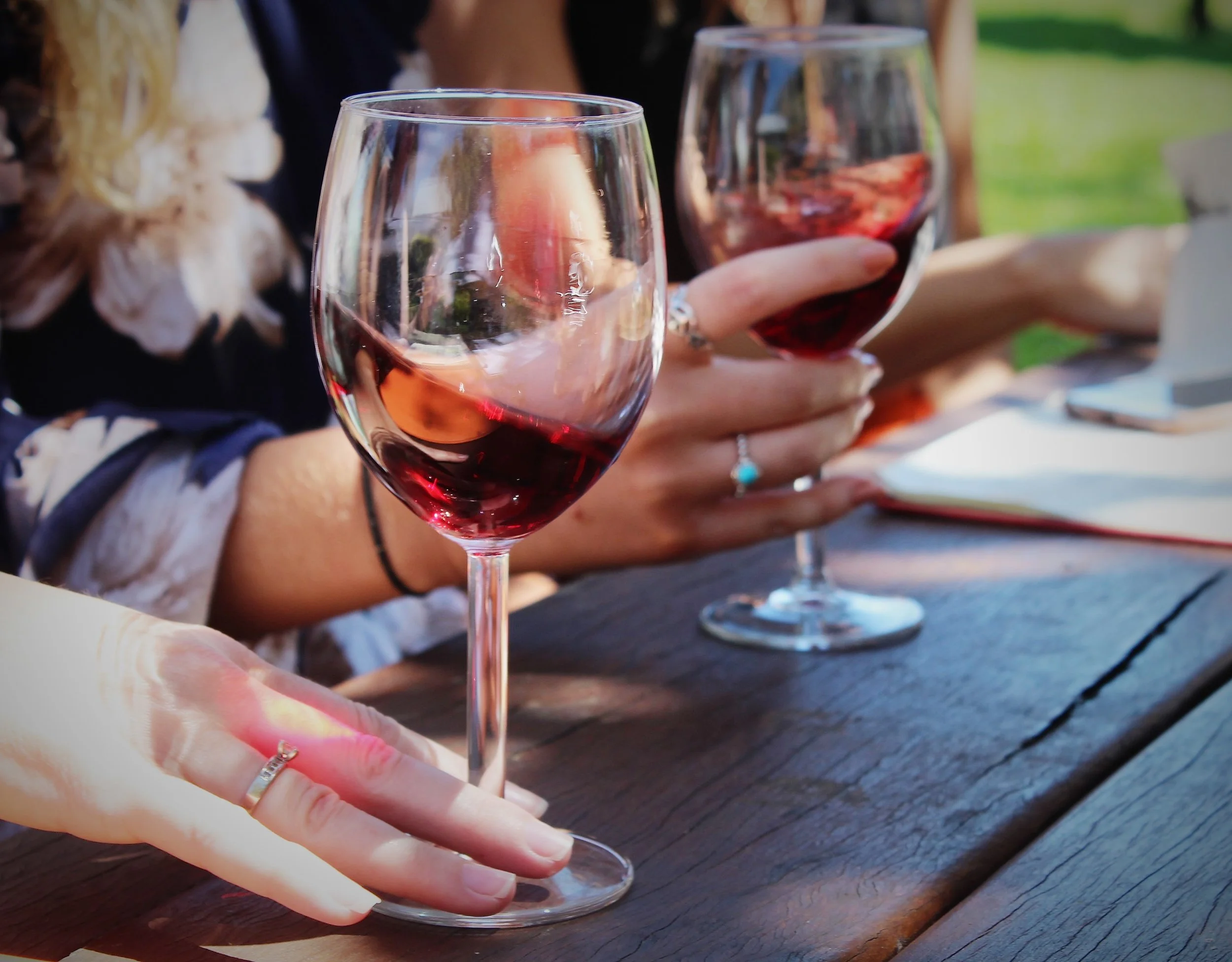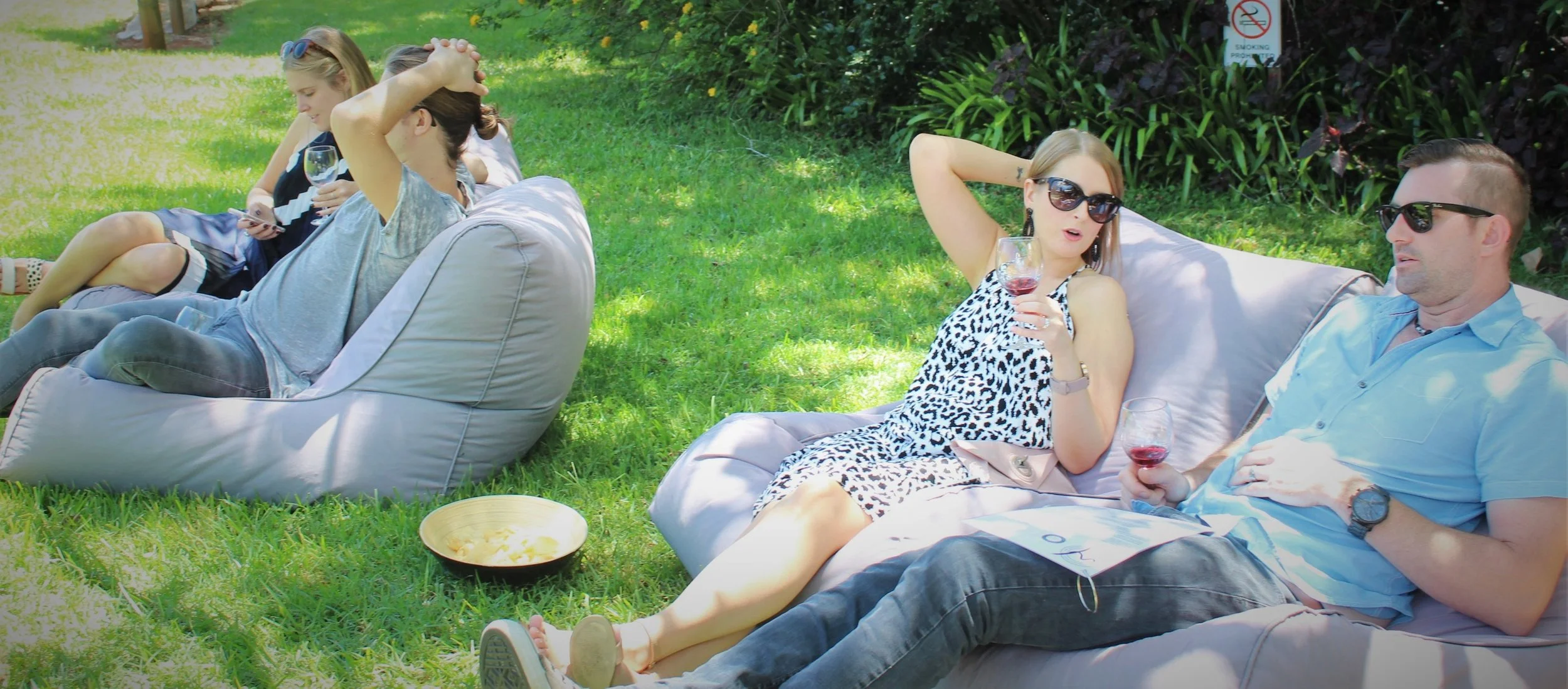Wine Tasting 101
Heading out on a wine tasting tour but have no idea what to do or where to start!? Don't fear my fellow wino, we'll have you looking like a connoisseur in no time!
To put it simply - there is no right or wrong way to wine tasting - either you love it, or you don't (and everyone is different!). Although, if you're wanting to up the ante on your wine tasting tour, there is a formal way to taste your wine and really discover the flavours / flaws.
Once you head into the cellar door, the staff should be able to tell you about their available wine on offer and give you a wine list. Things they may ask: "Do you like sweet or dry" "whites or reds" "oaky or un-oaked". Once they figure out your preferred flavours, they should be able to suggest a few vinos to suit your palate.
Wine tasting is all about using your senses: SIGHT, SWIRL, SMELL, TASTE.
First step... SIGHT:
Hold your glass up to the light or against a white wall to capture the depth and hue of colour in your wine. The colour in your wine comes mostly from contact with grape skins and/or oak barrels. This helps us determine the body & characteristics of the wine before we take the plunge.
(Is it deep in colour? Light, almost pink? Brownish tinge? Yellow?)
So, why do we care about its colour? Basically: Light/clear = crisp and tart. Deep/dark = full bodied & oaked.
Let's look at whites... Is the colour light & almost clear? Or does it have a yellowish tinge?
Light coloured/clear wines usually mean they have been fermented in stainless steel tanks only (no oak) which would suggest it's a nice crisp, refreshing & possibly acidic wine.
The depth of yellow in your wine would suggest its level of oakiness - giving the wine a smooth buttery, vanilla, woody flavour (quite typically found in Chardonnays). These wines are a lot fuller & richer in flavour.
This is a great way to detect oak in your wines for those who aren't a fan!
Now the reds... Similar to the whites, the lighter the colour generally suggests less time in oak or less contact with the grape skins. If it's pink in colour, it's likely that this wine hasn't been exposed to oak and will be crisp & tart.
Wines that are deep red, almost purple are likely to be rich in flavour and aged in oak barrels which mellows out the wine and adds a fullness (these are the reds you'll want to pair with your steak).
Second Step... THE SWIRL:
There's a couple of ways to do this - up in the air making circle movements with your wrist OR you can keep your glass flat on the table and swirl from the base of the glass. For first-time-swirlers, we suggest avoiding white clothing ;).
What's the purpose of this (besides looking like a pro)?
To get oxygen into the wine and "open up" its aromas (this can completely change the taste of your wine)!
Oxygen is both a friend and foe of wine. Friend; because once poured, oxygen helps break down wine and soften the taste. It also helps release the aromas which helps with your next step! Foe; because if you leave wine exposed to oxygen for too long (say, overnight), your wine will be ruined and most likely taste bitter or off.
Side note: No need to swirl your champagne! This will only create flat bubbles.... and nobody wants flat bubbles!
Third Step... SMELL:
You've just finished swirling like a pro - so now it's time to give it a smell!
Your sense of smell is such an important part of wine tasting. What you smell is going to prepare your brain for what you're about to taste (and also detect any flaws in the wine)!
Stick your nose into the centre of your glass and breathe deeply through your nose. As you smell the wine, think about what scent it reminds you of (keep in mind everyone's answers are likely to be different. We all relate smells to different memories - there's no right or wrong answer here).
With your whites you may detect a scent of of citrus, vanilla, grass or flowers. With your reds you may detect berries, prunes, plums or tobacco... Or perhaps just fermented grapes.
This is also an opportunity to pick up any flaws in the wine. If it has an off scent, or smells like sulphur, vinegar or soggy newspapers - It's likely something has gone wrong, or has been left opened in the fridge for too long.
Last but not least...TASTE:
OK, you've seen, swirled and smelt - now it's time for the grand finale! TASTE!
Take a small sip and swish it around your palate to cover all sides (sweet, sour, salty & bitter). From here you are going to pick up the flavour, texture & length.
Flavours such as oak, bitterness, acidic, citrus, berries, vanilla, grassy all come to mind when I drink wine. You may pick up chocolate, leather, lemons or earthy notes.
How is the texture of the wine? Is the viscosity thin like water, or thick like syrup? Is the wine gritty or smooth? Wines that are high in tannin usually feel a bit more gritty and peppery - which tends to give you a dry mouth feel... Which leads me to length.
The length of the wine is the lingering mouth feel. Did the flavours hang around in your mouth, or was the party over quickly?
The Conclusion:
Could you picture yourself sitting on the deck with a glass of this vino?
If the answer is yes - BUY IT BABY!
We hope this helps with your next wine tasting experience (hopefully on one of our mega awesome wine tasting tours!)
Yours truly,
Tash Maree x






